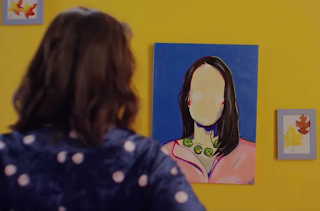Exploration Extravaganza
Our group is doing a pop song by Olivia Rodrigo, called “jealousy, jealousy.” The audience is told a story by the lyrics and the varying settings of the music video.
Mis-En-Scene:
i. They wear costumes that coincide with their lyrics and setting, for example, a song that has a setting in school might be a school uniform or casual attire like a blouse and trousers. It can also be fancy, semi-formal, or flashy. A common feature in the majority of music videos is bright colors, darker colors are not seen as much.
ii. Props include microphones and different instruments. They are meant as supporting components for the subject of the scene. If the song has an underlying tone or message, the props can be used as symbolism.
iii. The lighting is typically colorful although when darker colors are used, they are for contrast to make the brighter colors pop. One determining factor for lighting is the mood of the song and setting.
Sound:
i. Dialogue is placed in the intro of some music videos to introduce the concept or convey an opening.
ii. Background dialogue or non-diegetic sound may be placed in the ending of songs to conclude it.
On rare occasions, the dialogue will be placed within the song, stopping the music and lyrics entirely for what is usually a few seconds of dialogue, then continuing on with the music.
Camera Angles, Movement, and Shots:
i. ·The camera is focused on the artist or a subject. Some shots are seen in close-ups, wide-angle shots, and tracking shots where the subject of the video may be moving around a lot.
ii. Two-shots are used to establish relationships between two characters
iii. Establishing shots show the general setting that the music video takes place in
iv. The camera often pans to the character of interest of the main character
Editing
i. The editing relies on the mood, story, and aesthetic of the music video. Although it is generally used to the beat using jump cuts, cross-cutting, and dissolving.
ii. Editing is often reliant on the mood of the video. A sad and melancholic music video will have more fade-ins/outs than a happy and upbeat one.
iii. Eyeline-matches often used to easily show the audience the point of view of the main character
iv. Action matches are used to add more diversity to a scene and make to show the effect of the character's action


Comments
Post a Comment